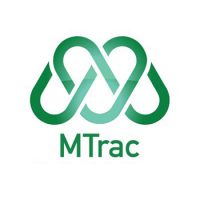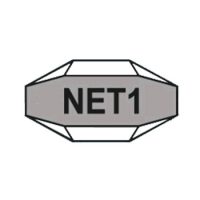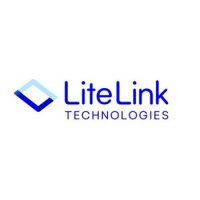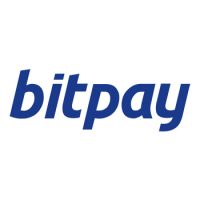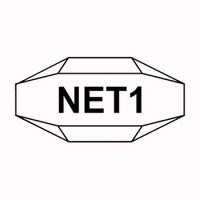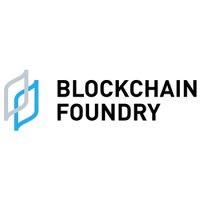Blockchain Press Releases
Membrane Contactor Market worth $394 million by 2028 – Exclusive Report by MarketsandMarkets™
CHICAGO, July 4, 2023 /PRNewswire/ — The report “Membrane Contactor Market by Function (Hydrophobic, Hydrophilic), Type (Polypropylene, Polytetrafluoroethylene), Application (Food Processing, Pharmaceutical Processing, Water & Wastewater Treatment) and Region – Global Forecast to 2028″, is projected to grow from USD 290 million in 2023 to USD 394 million by 2028, at a CAGR of 6.3% from 2023 to 2028. Membrane contactors offer a significant interfacial area between two phases, enabling effective mass transfer of gases, volatile substances, or solutes. The membrane’s selective permeability allows for the targeted separation or transfer of particular components, improving process effectiveness and product quality.
Browse in-depth TOC on “Membrane Contactor Market”
190 – Tables
45 – Figures
170 – Pages
Download PDF Brochure: https://www.marketsandmarkets.com/pdfdownloadNew.asp?id=166558134
By membrane type, the others segment accounted for the second largest market share in 2022.
The other membrane types include perfluroalkoxy (PFA), polyvinylidene fluoride (PVDF), polymethylpentene (PMP), and composites. PFA membranes are adept at handling corrosive fluids and offer efficient mass transfer. Another fluoropolymer noted for its superior mechanical strength and chemical resistance is PVDF. PMP membranes are useful for a variety of applications due to their high gas permeability and low fouling tendencies. The use of other membrane types in the production of membrane contactors for the above-mentioned characteristics will fuel growth of this segment.
By application, the food processing segment is estimated to grow at the highest rate during 2023 to 2028.
The food processing segment, by applications, is projected to grow at the highest CAGR, owing to its usage in deaeration and degassing of liquid food products. Membrane contactors remove dissolved gases such as oxygen or carbon dioxide to enhance the quality, flavor, and stability of beverages, juices, wines, or sauces. They provide effective gas-liquid separation, which reduces foaming, extends the shelf life of the product, and improves taste. Membrane contactors are used in the food processing industry because they improve product quality, shelf life, flavor retention, and process effectiveness.
Request Sample Pages: https://www.marketsandmarkets.com/requestsampleNew.asp?id=166558134
Asia Pacific was the largest region in the membrane contactor market in 2022.
The Asia Pacific region has been investing resources in R&D projects to create cutting-edge membrane technology and enhance current membrane contactor procedures. Collaborations between academic institutions, research organizations, and business stakeholders are improving membrane performance, creating new materials, and enhancing system design for particular applications. The need for membrane contactors in the area is being driven by such developments. Also, sustainability and environmentally friendly practices are being emphasized more and more by governments and businesses in Asia Pacific, fueling the growth of membrane contactor market.
Market Players :
The major players operating in the membrane contactor market include 3M (US), Romfil (Germany), JU.CLA.S Srl (Italy), KH TEC GmbH (Germany), Hangzhou Cobetter Filtration Equipment Co., Ltd. (China), PTI Pacific Pty. Ltd. (Australia), EUROWATER (Denmark), Hydro-Elektrik GmbH (Germany), Compact Membrane Systems (US), Veolia Water Technologies (France), Wuhan Tanal Industrial Co., Ltd. (China), and others.
Browse Adjacent Market: Membranes Market Research Reports & Consulting
Related Reports:
Gas Separation Membranes Market – Global Forecast to 2026
Membranes Market – Global Forecast to 2027
About MarketsandMarkets™
MarketsandMarkets™ is a blue ocean alternative in growth consulting and program management, leveraging a man-machine offering to drive supernormal growth for progressive organizations in the B2B space. We have the widest lens on emerging technologies, making us proficient in co-creating supernormal growth for clients.
The B2B economy is witnessing the emergence of $25 trillion of new revenue streams that are substituting existing revenue streams in this decade alone. We work with clients on growth programs, helping them monetize this $25 trillion opportunity through our service lines – TAM Expansion, Go-to-Market (GTM) Strategy to Execution, Market Share Gain, Account Enablement, and Thought Leadership Marketing.
Built on the ‘GIVE Growth’ principle, we work with several Forbes Global 2000 B2B companies – helping them stay relevant in a disruptive ecosystem. Our insights and strategies are molded by our industry experts, cutting-edge AI-powered Market Intelligence Cloud, and years of research. The KnowledgeStore™ (our Market Intelligence Cloud) integrates our research, facilitates an analysis of interconnections through a set of applications, helping clients look at the entire ecosystem and understand the revenue shifts happening in their industry.
To find out more, visit www.MarketsandMarkets™.com or follow us on Twitter, LinkedIn and Facebook.
Contact:
Mr. Aashish Mehra
MarketsandMarkets™ INC.
630 Dundee Road
Suite 430
Northbrook, IL 60062
USA: +1-888-600-6441
Email: [email protected]
Research Insight: https://www.marketsandmarkets.com/ResearchInsight/membrane-contactor-market.asp
Visit Our Website: https://www.marketsandmarkets.com/
Content Source: https://www.marketsandmarkets.com/PressReleases/membrane-contactor.asp
Logo: https://mma.prnewswire.com/media/660509/MarketsandMarkets_Logo.jpg
View original content:https://www.prnewswire.co.uk/news-releases/membrane-contactor-market-worth-394-million-by-2028—exclusive-report-by-marketsandmarkets-301869413.html

Blockchain
Blocks & Headlines: Today in Blockchain – May 9, 2025
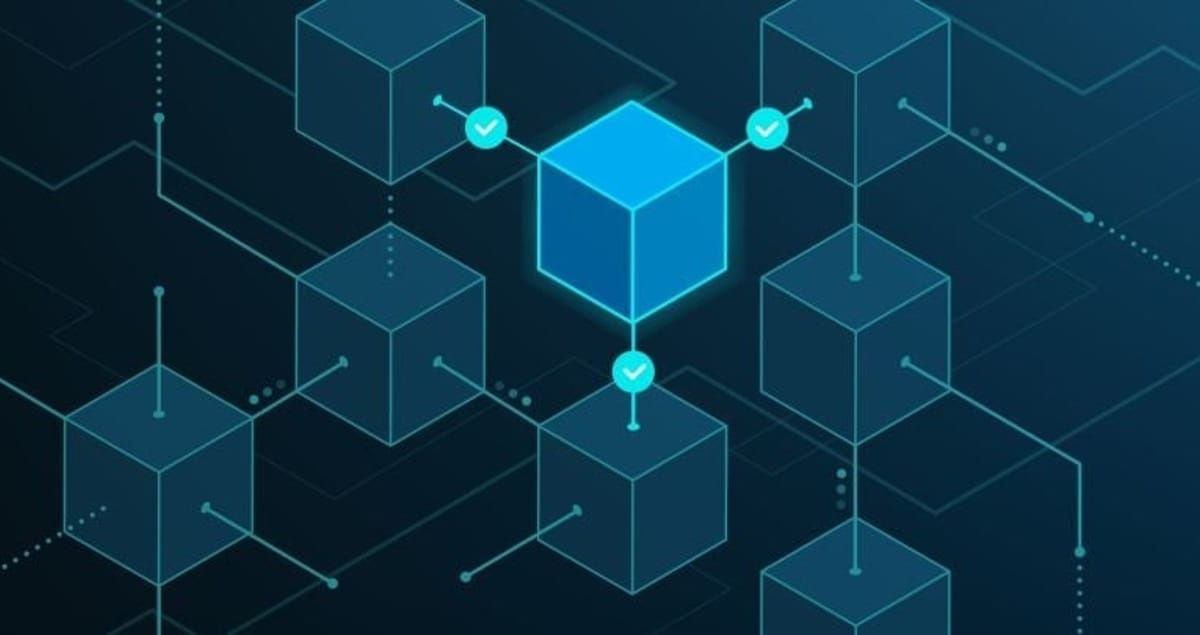
Welcome to Blocks & Headlines, your daily deep-dive into the most impactful movements in blockchain technology and the cryptocurrency sector. In today’s edition, we unpack five major stories that illuminate trends in funding, sustainability, payment innovation, banking collaborations, and technical interoperability—all vital signposts for developers, investors, and Web3 enthusiasts. Here’s what’s on the docket:
-
Camp Network’s New IP-Focused Testnet
-
Blockchain for Sustainable Packaging
-
Meta’s Blockchain-Based Payment System Plans
-
Mocse Credit Union Joins Metal Blockchain’s Innovation Program
-
Apex Fusion on the Urgency of Blockchain Defragmentation
Through concise reporting, opinion-driven analysis, and SEO-optimized insights—featuring keywords like blockchain, cryptocurrency, Web3, DeFi, and NFTs—we’ll explore how these developments shape the next wave of decentralized finance, enterprise adoption, and mass onboarding.
1. Camp Network Launches Testnet for IP-Focused Blockchain
What Happened:
Camp Network has unveiled its long-anticipated testnet following a $30 million funding round led by leading crypto VCs. This new network is tailored for intellectual property (IP) asset tokenization, aiming to streamline rights management and royalty payments via smart contracts.
-
Technical Highlights:
-
Modular Consensus: Hybrid PoS/PoA consensus that allows IP rightsholders to validate transactions.
-
On-Chain Licensing: Smart contracts enabling programmable licensing terms, automated royalty splits, and revocable access controls.
-
Interoperability: Bridges to Ethereum and Polygon enable seamless asset transfers and liquidity provisioning.
-
Analysis & Implications:
By focusing on IP tokenization, Camp Network addresses a glaring gap in current NFT platforms, which often lack robust legal-framework integration. This specialization could catalyze:
-
New Revenue Models: Musicians, authors, and inventors can fractionalize royalties, unlocking liquidity and democratizing investment in creative works.
-
Institutional Adoption: Traditional publishers and studios may pilot tokenized licensing, accelerating blockchain’s entrée into regulated industries.
-
Secondary Markets: With on-chain licensing data, marketplaces can enforce provenance and anti-fraud measures more effectively.
Camp Network’s testnet success will hinge on developer tooling, legal partnerships, and gas-fee economics. Should it deliver a smooth UX and clear ROI for rightsholders, it could set a new standard for Web3 IP infrastructure.
Source: The Block
2. Blockchain as a Sustainable Packaging Game-Changer
What Happened:
A recent report explores how blockchain can revolutionize sustainable packaging by delivering end-to-end supply-chain transparency. The solution combines on-chain tracking of materials, IoT sensor data for carbon footprint measurement, and tokenized incentives for recycling.
-
Key Components:
-
Immutable Traceability: Each packaging component is logged on a public ledger, enabling consumers to verify sustainable sourcing.
-
Carbon Credit Tokens: Brands earn tokenized credits when they hit recycling targets, tradable on carbon-market DAOs.
-
Consumer-Facing Apps: QR-code scanning interfaces reveal environmental impact metrics and reward programs.
-
Analysis & Implications:
Integrating blockchain with sustainable packaging tackles greenwashing and fragmented reporting. The ability to tie physical materials to on-chain records introduces:
-
Enhanced Accountability: Brands face real-time public scrutiny of ESG claims, improving trust and regulatory compliance.
-
Market Mechanisms: Carbon credit tokens linking packaging to broader DeFi ecosystems incentivize circular economy behaviors.
-
Consumer Engagement: NFTs or loyalty tokens tied to sustainable purchases could accelerate brand loyalty in eco-conscious demographics.
This convergence of blockchain, IoT, and token economics exemplifies how decentralized technologies can underpin not only financial systems but also planetary stewardship.
Source: Yahoo Finance
3. Meta Plans New Blockchain-Based Payment System
What Happened:
Meta is reportedly developing a blockchain-powered payment network to underpin its digital wallet ambitions, aiming to facilitate low-fee remittances, in-app purchases, and peer-to-peer transfers across Facebook, Instagram, and WhatsApp.
-
Proposed Features:
-
Cross-Border Settlements: Utilizing stablecoins pegged to major fiat currencies to avoid volatility.
-
Layer-2 Scalability: Built atop an Ethereum Layer-2 or a proprietary chain to ensure sub-second confirmation times and minimal fees.
-
Regulatory Compliance: On-chain KYC/AML checks integrated via permissioned sidechains.
-
Analysis & Implications:
Meta’s push into blockchain payments could reshape the competitive landscape:
-
Crypto On-Ramp: With 3 billion+ monthly users, built-in wallet functionality could massively expand mainstream cryptocurrency adoption.
-
Disintermediation Risk: Traditional payment processors and remittance services face margin compression as Meta internalizes transaction flows.
-
Regulatory Scrutiny: Centralized control of a global payments network raises data-privacy and antitrust questions, likely attracting significant oversight.
If Meta balances decentralization ethos with compliance demands, it could serve as a blueprint for other Big Tech firms eyeing Web3 integration.
Source: Dig.watch
4. Mocse Credit Union Joins Metal Blockchain’s Banking Innovation Program
What Happened:
Mocse Credit Union has signed on to Metal Blockchain’s Banking Innovation Program, a consortium designed to accelerate pilot projects in tokenized lending, fractional deposits, and programmable savings accounts.
-
Program Benefits:
-
Sandbox Environment: Regulatory-compliant testbeds for tokenized asset experiments.
-
API Integrations: Plug-and-play modules for KYC, smart-contract auditing, and fiat-crypto on-ramps.
-
Co-Innovation Workshops: Joint labs with fellow financial institutions and DeFi projects.
-
Analysis & Implications:
This partnership signals the banking sector’s growing willingness to explore blockchain beyond hype:
-
Tokenized Deposits: By issuing interest-bearing stablecoin equivalents, credit unions can attract a new demographic of digitally native savers.
-
Risk Management: Sandboxed pilots allow institutions to evaluate smart-contract risks without exposing core systems.
-
Interoperable Finance: Aligning legacy banking with DeFi rails can unlock hybrid products—e.g., flash loans collateralized by insured deposits.
Such collaborations could spearhead a wave of embedded finance offerings, blurring the lines between centralized and decentralized banking infrastructures.
Source: Newswire
5. Apex Fusion: Defragmenting Blockchain for Mass Adoption
What Happened:
In an op-ed, Apex Fusion argues that blockchain interoperability and defragmentation are critical prerequisites for mainstream Web3 uptake. The piece advocates standardized cross-chain messaging protocols, unified identity layers, and aggregated liquidity pools.
-
Core Proposals:
-
Protocol Neutral Messaging: A universal middleware to transmit value and data across disparate chains.
-
Decentralized Identity (DID): A shared credential framework enabling seamless dApp logins without wallet-hopping.
-
Liquidity Hubs: Cross-chain Automated Market Makers (AMMs) that pool assets to reduce slippage and gas friction.
-
Analysis & Implications:
A fragmented blockchain ecosystem hinders user experience and developer efficiency:
-
Onboarding Friction: New users face wallet complexity, chain-switching hassles, and inconsistent UX across apps.
-
Capital Inefficiency: Isolated liquidity silos lead to higher trading costs and limit DeFi yield optimization.
-
Developer Overhead: Building multichain dApps requires fragmented toolkits and disparate security audits.
Solving these challenges through interoperable frameworks will be pivotal for DeFi, NFT, and enterprise Web3 solutions to scale beyond niche audiences. Apex Fusion’s recommendations may inform upcoming standards efforts by bodies like the Blockchain Governance Initiative Network (BGIN).
Source: Euro Weekly News
Conclusion
Today’s blockchain developments reflect a maturing industry at the crossroads of innovation and integration:
-
Specialized Networks: Camp Network’s IP testnet showcases niche use-cases driving targeted blockchain deployments.
-
Sustainability & Token Economics: Linking environmental impact to on-chain incentives demonstrates blockchain’s potential in non-financial arenas.
-
Big Tech Entry: Meta’s payment ambitions could accelerate global crypto adoption while raising regulatory stakes.
-
Banking Collaboration: Programs like Metal Blockchain’s underscore financial institutions’ appetite for safe, regulated Web3 experimentation.
-
Interoperability Imperative: As Apex Fusion highlights, defragmentation and cross-chain standards are essential for seamless UX and liquidity flow.
As blockchain weaves deeper into finance, supply chains, and digital ecosystems, the future hinges on striking the right balance between decentralization, compliance, and user-centric design. Stay tuned for tomorrow’s Blocks & Headlines where we continue to chronicle the pulse of Web3 innovation.
The post Blocks & Headlines: Today in Blockchain – May 9, 2025 appeared first on News, Events, Advertising Options.
Blockchain Press Releases
Bybit Surpasses 70 Million Users, Reinforces Commitment to Transparency and Institutional Growth

DUBAI, UAE, May 9, 2025 /PRNewswire/ — Bybit, the world’s second-largest cryptocurrency exchange by trading volume, today announced it has surpassed 70 million registered users, a milestone that highlights the platform’s sustained global growth and deepening trust among both retail and institutional clients. This achievement underscores Bybit’s robust market presence and its steadfast commitment to security, compliance, and product innovation.
“Reaching 70 million users is more than a number—it’s a testament to the trust our global community places in us,” said Ben Zhou, co-founder and CEO of Bybit. “We are doubling down on compliance, institutional-grade infrastructure, and user-centric innovation to ensure everyone—from first-time traders to global institutions—can access the future of finance with confidence.”
Strengthening Global Compliance and Regulatory Engagement
Bybit continues to expand its global compliance framework, working closely with regulators around the world. Most recently, Bybit held strategic discussions with Vietnam’s Ministry of Finance, contributing to the country’s regulatory sandbox initiative by sharing expertise in KYC, AML, and international best practices.
Bybit has also made key progress in major jurisdictions, including the United Arab Emirates, further demonstrating its commitment to regulatory alignment and operational transparency.
Accelerating Institutional Growth
Bybit is seeing rapid growth among institutional clients, driven by high-performance trading infrastructure, advanced risk controls, and strategic partnerships. The integration with Zodia Custody—a leading provider of institutional-grade custody and off-venue settlement solutions—reflects Bybit’s ongoing efforts to meet the needs of sophisticated investors with robust, compliant offerings.
Pioneering Web3 Integration and Real-World Utility
Bybit continues to lead in practical Web3 innovation. The Bybit Card, now used by nearly 2 million people, enables everyday crypto spending, while Bybit Pay streamlines on-chain and off-chain transactions for both users and merchants.
In line with its user-first philosophy, Bybit is also leveraging artificial intelligence to enhance trading, research, and support services. CryptoLens, an in-house AI analytics tool, offers users deep insights into token fundamentals, community activity, social trends, and tokenomics—even for projects not listed on the platform. TradeGPT, an AI agent trained on Bybit’s proprietary data, delivers rapid price action summaries and technical analysis, helping traders make smarter decisions. Complementing these innovations, an AI Support Agent enhances customer service by improving response efficiency and user experience across the platform.
Bridging Traditional Finance and the Future of Digital Assets
Bybit remains committed to its role as #TheCryptoArk—a safe, trusted bridge from traditional finance into the world of Web3. Through intuitive products, regulatory collaboration, and cutting-edge technology, Bybit empowers users of all levels to navigate and thrive in the digital asset ecosystem.
“We’re building the infrastructure for the next era of finance,” Ben added. “By championing regulation, professionalism, and a relentless user-first approach, we’re shaping a safer, more inclusive, and more empowering financial future for all.”
#Bybit / #TheCryptoArk
About Bybit
Bybit is the world’s second-largest cryptocurrency exchange by trading volume, serving a global community of over 70 million users. Founded in 2018, Bybit is redefining openness in the decentralized world by creating a simpler, open, and equal ecosystem for everyone. With a strong focus on Web3, Bybit partners strategically with leading blockchain protocols to provide robust infrastructure and drive on-chain innovation. Renowned for its secure custody, diverse marketplaces, intuitive user experience, and advanced blockchain tools, Bybit bridges the gap between TradFi and DeFi, empowering builders, creators, and enthusiasts to unlock the full potential of Web3. Discover the future of decentralized finance at Bybit.com.
For more details about Bybit, please visit Bybit Press
For media inquiries, please contact: [email protected]
For updates, please follow: Bybit’s Communities and Social Media
Discord | Facebook | Instagram | LinkedIn | Reddit | Telegram | TikTok | X | Youtube
Logo – https://mma.prnewswire.com/media/2267288/Logo.jpg
![]() View original content:https://www.prnewswire.co.uk/news-releases/bybit-surpasses-70-million-users-reinforces-commitment-to-transparency-and-institutional-growth-302451104.html
View original content:https://www.prnewswire.co.uk/news-releases/bybit-surpasses-70-million-users-reinforces-commitment-to-transparency-and-institutional-growth-302451104.html

Blockchain Press Releases
Unleashing the Power of Futures Combo Bots on Bybit: Leveling up Futures Trading with More Rewards

DUBAI, UAE, May 9, 2025 /PRNewswire/ — Bybit, the world’s second-largest cryptocurrency exchange by trading volume, Futures Combo Carnival, a month-long trading event rewarding both new and experienced Futures Combo traders with multiple rewards tracks. Trading thresholds start at 300 USDT with rewards of up to 500 USDT in prizes weekly.
The largest Futures Combo campaign on Bybit to date, the Carnival gives traders even more reasons to make their futures trading journey hassle-free and more rewarding. Bot-enabled automated trading is becoming the norm among strategic traders in a turbulent market, where no traders can afford manmade mistakes or delays in execution.
Bybit’s Futures Combo Bot is a powerful tool for streamlining users’ futures trading experience, empowering them to build portfolios and rebalance positions across multiple futures contracts. The innovative solution allows traders to set up a Bot within minutes, minimizing manual management of complex trading strategies, and achieving both efficiency and flexibility when managing combos of futures contracts.
From now to Jun. 9, 2025, eligible Bybit users may take part in two events with a welcome bonus for first-time users:
- The Combo Battle offers newcomers who achieve a trading volume of 300 USDT an immediate 5 USDT Bot Bonus on a first-come, first-served basis, while experienced traders can earn lucky draw tickets by reaching volume milestones of 1,000 USDT and 2,500 USDT respectively using Bybit’s Futures Combo Bot.
- The Combo Challenge invites Mandarin-speaking Key Opinion Leaders to create and share their trading strategies on social media using the hashtag #ComboChallenge, with three weekly winners receiving 500 USDT each.
Bybit is committed to making futures trading more accessible to users looking to diversify their trading strategies. With rewards designed for both newcomers and experienced traders, this event strengthens community engagement while supporting users wherever they are on their trading journey. For more details and terms and conditions, users may visit: Bybit Futures Combo Carnival
#Bybit / #TheCryptoArk
About Bybit
Bybit is the world’s second-largest cryptocurrency exchange by trading volume, serving a global community of over 60 million users. Founded in 2018, Bybit is redefining openness in the decentralized world by creating a simpler, open and equal ecosystem for everyone. With a strong focus on Web3, Bybit partners strategically with leading blockchain protocols to provide robust infrastructure and drive on-chain innovation. Renowned for its secure custody, diverse marketplaces, intuitive user experience, and advanced blockchain tools, Bybit bridges the gap between TradFi and DeFi, empowering builders, creators, and enthusiasts to unlock the full potential of Web3. Discover the future of decentralized finance at Bybit.com.
For more details about Bybit, please visit Bybit Press
For media inquiries, please contact: [email protected]
For updates, please follow: Bybit’s Communities and Social Media
Discord | Facebook | Instagram | LinkedIn | Reddit | Telegram | TikTok | X | Youtube

Logo – https://mma.prnewswire.com/media/2267288/Logo.jpg
![]() View original content:https://www.prnewswire.co.uk/news-releases/unleashing-the-power-of-futures-combo-bots-on-bybit-leveling-up-futures-trading-with-more-rewards-302451105.html
View original content:https://www.prnewswire.co.uk/news-releases/unleashing-the-power-of-futures-combo-bots-on-bybit-leveling-up-futures-trading-with-more-rewards-302451105.html

-

 Blockchain Press Releases4 days ago
Blockchain Press Releases4 days agoHTX Premieres USD1 Stablecoin Globally, Partnering with World Liberty Financial to Forge a New Era of Decentralized Economy
-
Blockchain3 days ago
Colb Asset SA Raises $7.3 Million in Oversubscribed Round to Bring Pre-IPO Giants to Blockchain
-

 Blockchain7 days ago
Blockchain7 days agoUnitedStaking.com Launches Advanced Crypto Staking Platform with Global Reach and Real-World Impact
-

 Blockchain3 days ago
Blockchain3 days agoBlocks & Headlines: Today in Blockchain – May 7, 2025 | Coinbase, Riot Games, Curve DAO, Litecoin, AR.IO
-

 Blockchain Press Releases4 days ago
Blockchain Press Releases4 days agoJuCoin made a global impact at TOKEN2049 Dubai, advancing its ecosystem with the “Peak Experience” vision and JuChain’s robust tech.
-

 Blockchain Press Releases2 days ago
Blockchain Press Releases2 days agoHTX and Justin Sun Launch $6M Mars Program Special Edition, Offering One User a Historic Space Journey
-

 Blockchain Press Releases3 days ago
Blockchain Press Releases3 days agoGRVT Launches Biggest Ever Trading Competition for Retail Traders, Offering Up to 175,000 USDT in Prizes
-

 Blockchain4 days ago
Blockchain4 days agoBlocks & Headlines: Today in Blockchain – May 6, 2025 | Arkham, DMG Blockchain, Solana, Prologis






